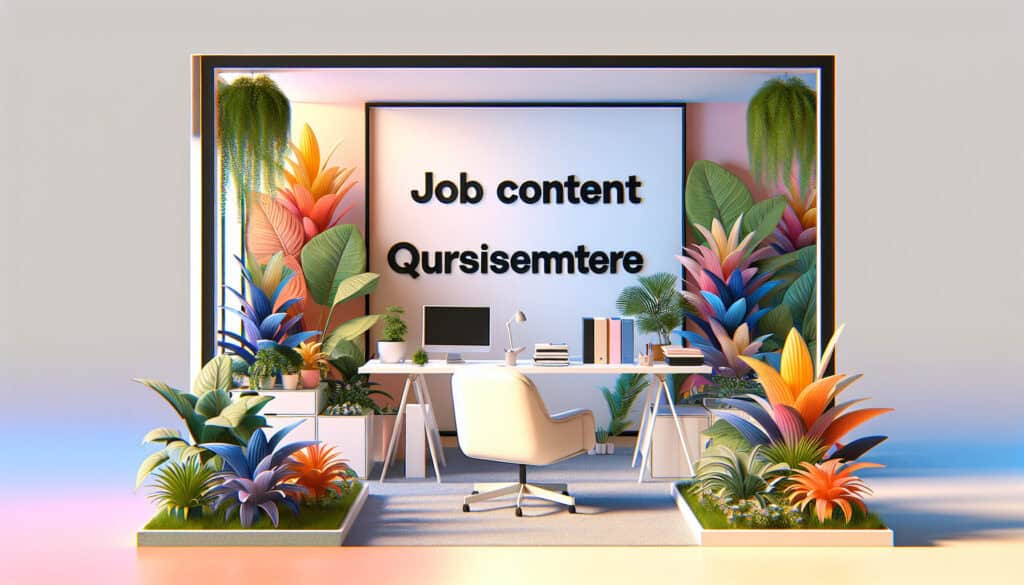To measure the psychosocial aspects of a job.
- Methodologies: Ergonomics
Job Content Questionnaire (JCS)

Job Content Questionnaire (JCS)
- Change Management, Ergonomics, Human Factors, Human-Centered Design, Organizational Transformation, Quality Management, Risk Management, Stress Corrosion, Sustainability Practices
Objective:
How it’s used:
- A self-administered questionnaire that is used to measure job-related psychosocial factors, such as job demands, job control, and social support. It is often used in research to study the relationship between work and health.
Pros
- Provides a standardized and validated measure of psychosocial job characteristics; Can be used to identify stressful working conditions.
Cons
- Can be subjective and may not capture all aspects of a job; The results can be influenced by individual differences.
Categories:
- Ergonomics, Human Resources
Best for:
- Assessing the psychosocial aspects of a job to identify potential stressors and improve worker well-being.
The Job Content Questionnaire (JCQ) is an effective tool utilized across diverse industries, including healthcare, manufacturing, and technology, to evaluate psychosocial job factors such as job demands, job control, and social support. It is often integrated during various project phases, particularly in the assessment and redesign of work environments, to enhance employee well-being and productivity. For instance, organizations may deploy the JCQ during the hiring process or at regular intervals in long-term projects to identify stressors that could impact workers’ mental health and performance. Employers, occupational health practitioners, and HR specialists typically initiate this assessment, engaging employees to participate in providing their perspectives on job-related factors. This methodology is complemented by its ability to generate data that leads to actionable insights, enabling businesses to implement interventions aimed at reducing job strain, improving social support structures, and refining job designs to optimize the overall work experience. The JCQ’s standardized and validated measures not only uphold consistency in evaluating psychosocial aspects but also allow for comparisons across organizations and industries, making it a versatile resource in occupational health research and initiatives aimed at maintaining a healthy work environment. Its application can also support compliance with occupational health standards and inform policies promoting safety and well-being in the workplace.
Key steps of this methodology
- Distribute the Job Content Questionnaire to relevant participants in a self-administered format.
- Instruct respondents to complete the questionnaire based on their current job experiences and perceptions.
- Ensure anonymity and confidentiality to encourage honest responses.
- Utilize a standardized scoring system to evaluate responses across the psychosocial factors assessed.
- Analyze the results to identify levels of job demands, control, and social support among participants.
- Compare findings against established benchmarks to identify problematic areas of work-related stress.
- Facilitate focus groups or interviews if further exploration of specific issues is needed.
- Develop action plans based on identified stressors and recommendations for improvement.
Pro Tips
- Incorporate qualitative data from interviews or focus groups alongside the JCS to capture nuanced employee experiences that quantitative measures may overlook.
- Utilize longitudinal studies with the JCS to assess changes in psychosocial factors over time, allowing for better understanding of their impact on employee health and productivity.
- Combine JCS results with organizational metrics, such as absenteeism or turnover rates, to paint a clearer picture of how psychosocial factors influence workplace outcomes.
To read and compare several methodologies, we recommend the
> Extensive Methodologies Repository <
together with the 400+ other methodologies.
Your comments on this methodology or additional info are welcome on the comment section below ↓ , so as any engineering-related ideas or links.
Historical Context
1960
1980
1983
1990
1995
2000
2010
1950
1980
1980
1986
1994
1995
2000
(if date is unknown or not relevant, e.g. "fluid mechanics", a rounded estimation of its notable emergence is provided)














Related Posts
METS to Calories Calculator
Meta-Analysis
Message Mapping
Mental Model Diagrams
Maximum Acceptable Pushing and Pulling Forces
Material Requirements Planning (MRP)